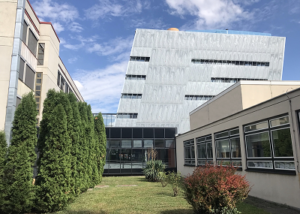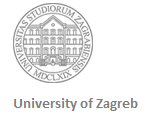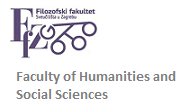Course title: Learners with special needs: blindness and SLA
Instructor: Asst. Prof. Renata Geld
ECTS credits: 3
Semester: IX
Status: elective
Enrollment requirements: none
Course description and objectives: The course offers basic aspects of interrelation between language, general cognitive processes and experience in relation to issues pertaining to language learning by the blind and visually impaired. Upon completing the course the students will be able to do the following: apply fundamental theoretical knowledge in practice; design and conduct simple studies dealing with language and its relation to other cognitive processes and aspects of experience; bridge the gap between certain theoretical findings and the needs of blind learners in their everyday learning environment; adjust teaching material and approaches to teaching to the needs of the blind; and consolidate previous knowledge about language, language acquisition and language teaching with the knowledge about specific needs of blind learners of L2.
Week by week schedule:
| week | topics |
| 1 | Fundamental concepts: blindness, legal blindness, visual impairment, individual differences |
| 2 | Motor and cognitive development: spatial cognition, joint attention, symbolic play, operational thinkingSocial interaction: prelinguistic development, theory of mind |
| 3 | Language development (part I): L1 development, relationship between language and thought, early words of blind children |
| 4 | Language development (part II): the issue of verbalism, lexicon, morphology, syntax, semantics, pragmatics |
| 5 | Fundamental issues in L2 development |
| 6 | REVISION – Test 1 |
| 7 | The visually impaired at school: everyday challenges |
| 8 | The visually impaired at school: the L2 classroom |
| 9 | The tactile exploration of the world and its relation to reading, writing, listening and speaking |
| 10 | Ways of testing theory in practice |
| 11 | REVISION – Test 2 |
| 12 | Ways of testing theory in practice: microproject I – plans and drafts |
| 13 | Consolidation |
| 14 | Ways of testing theory in practice: microproject II – reports |
| 15 | Ways of testing theory in practice: microproject II – reports |
Required reading:
Geld, R. and Šimunić, M. (2009). A case study of a blind speaker of English as L2, u Brdar, M., Omazić, M. i Pavičić-Takač V. (ed.) Cognitive Approaches to English: Some Fundamental Interdisciplinary and Applied Aspects, Newcastle: Cambridge Scholars Publishing.
Geld, R. 2006. Konceptualizacija i vidovi konstruiranja značenja: temeljne postavke i pojmovi kognitivnolingvističkog teorijskog okvira, Suvremena lingvistika, 62, pp. 183-211.
Hollins, M. (2000). Vision Impairment and Cognition. In: Silverstone, B., Lang, M.A., Rosenthal, B.P., Faye, E.E. (ed.) The Lighthouse Handbook on Vision Impairment and Vision Rehabilitation. Oxford University Press.
Landau, B. and Gleitman, L. R. (1985). Language and experience: Evidence from the blind child. Cambridge, MA: Harvard University Press.
Rosel, J., Caballer, A., Jara, P. and Oliver, J. C. (2005). Verbalism in the narrative language of children who are blind and sighted. Journal of Visual Impairment and Blindness, 413- 425.
Stančić, V. (1991). Oštećenja vida. Biopsihosocijalni aspekti. Školska knjiga, Zagreb.
Recommended reading:
Conti-Ramsden, G. and Perez-Pereira, M. (1999). Conversational interactions between mothers and their infants who are congenitally blind, have low vision, or are sighted. Journal of Visual Impairment and Blindness.
Dirven, R. and Verspoor, M. 2004. Cognitive Exploration of Language and Linguistics. Amsterdam/Philadelphia: John Benjamins.



